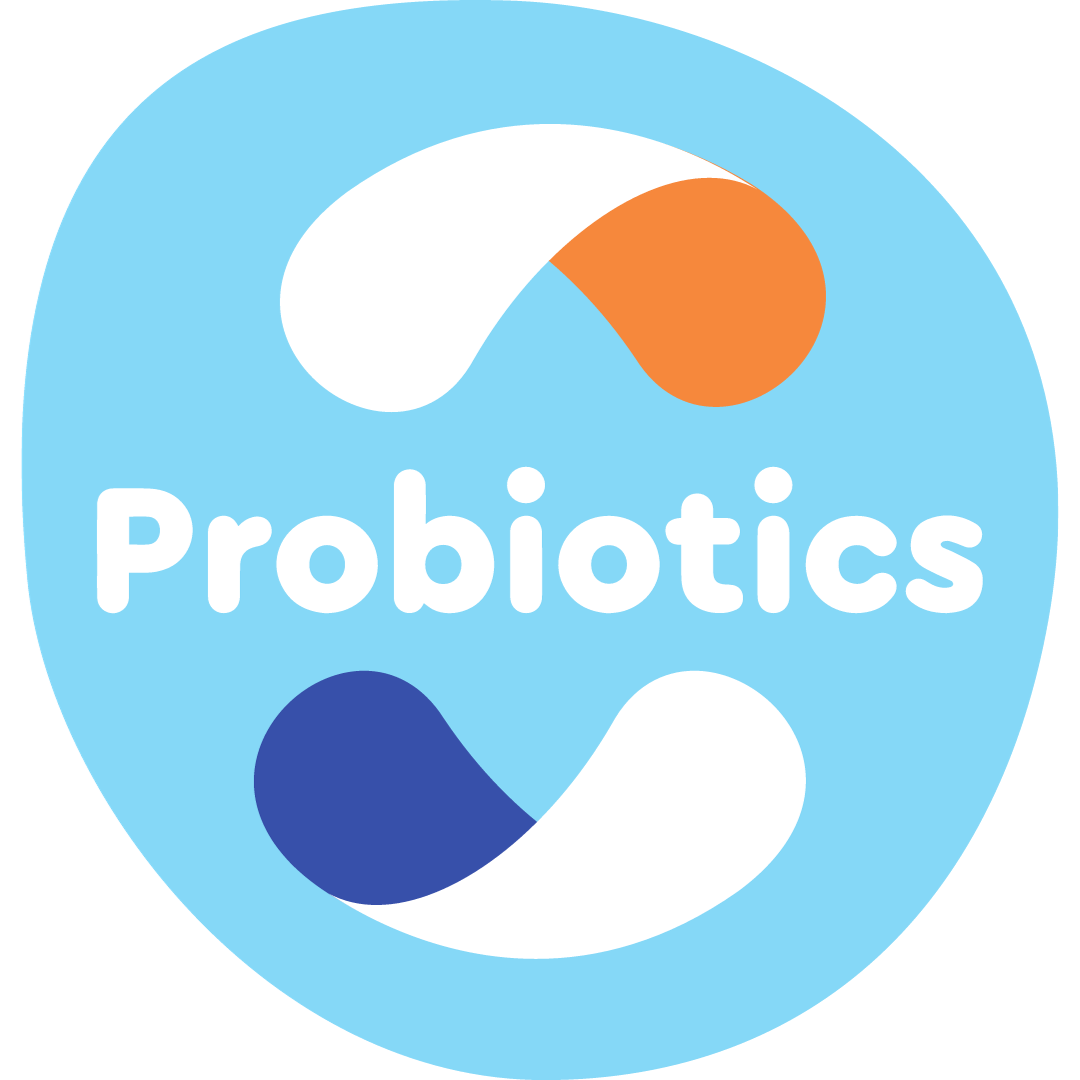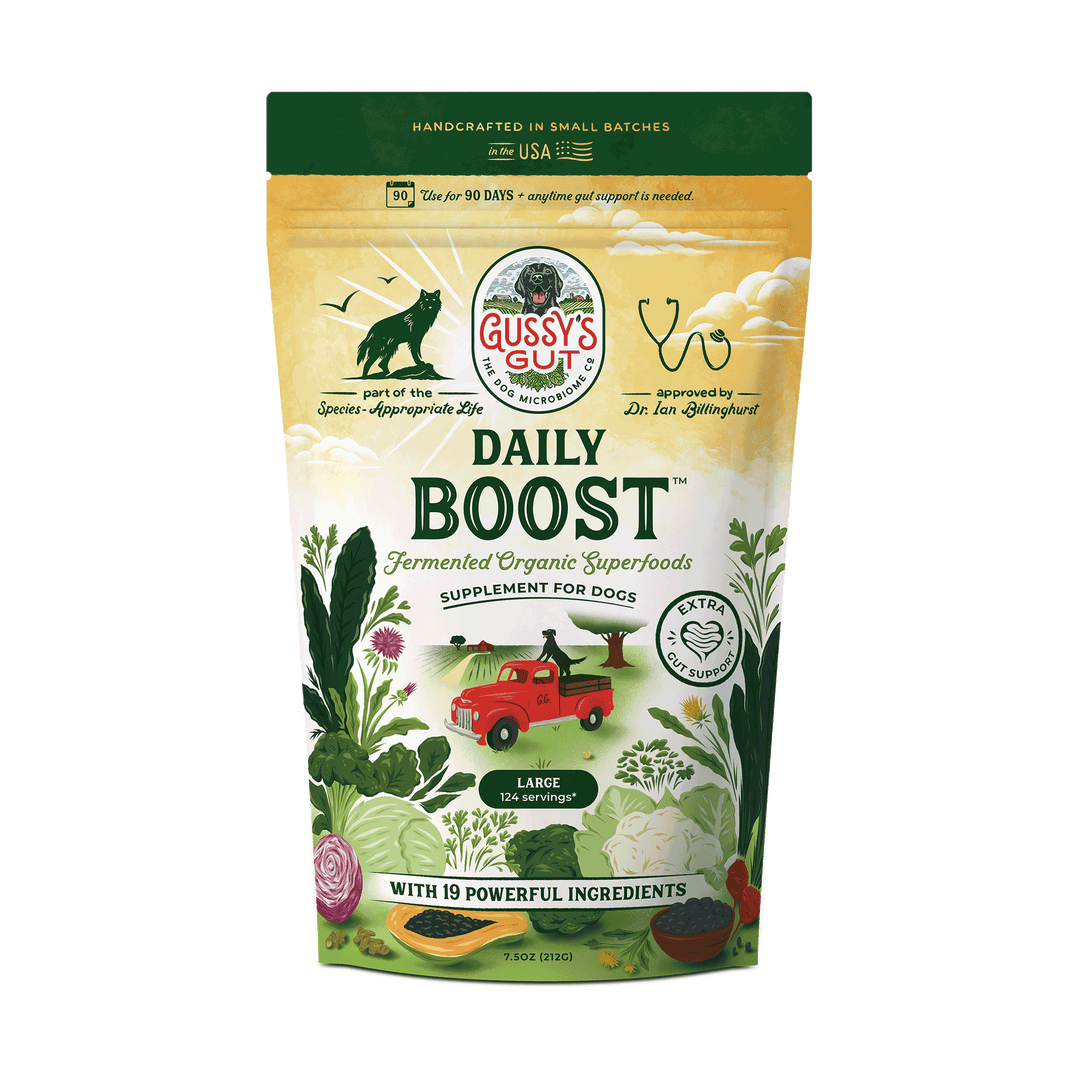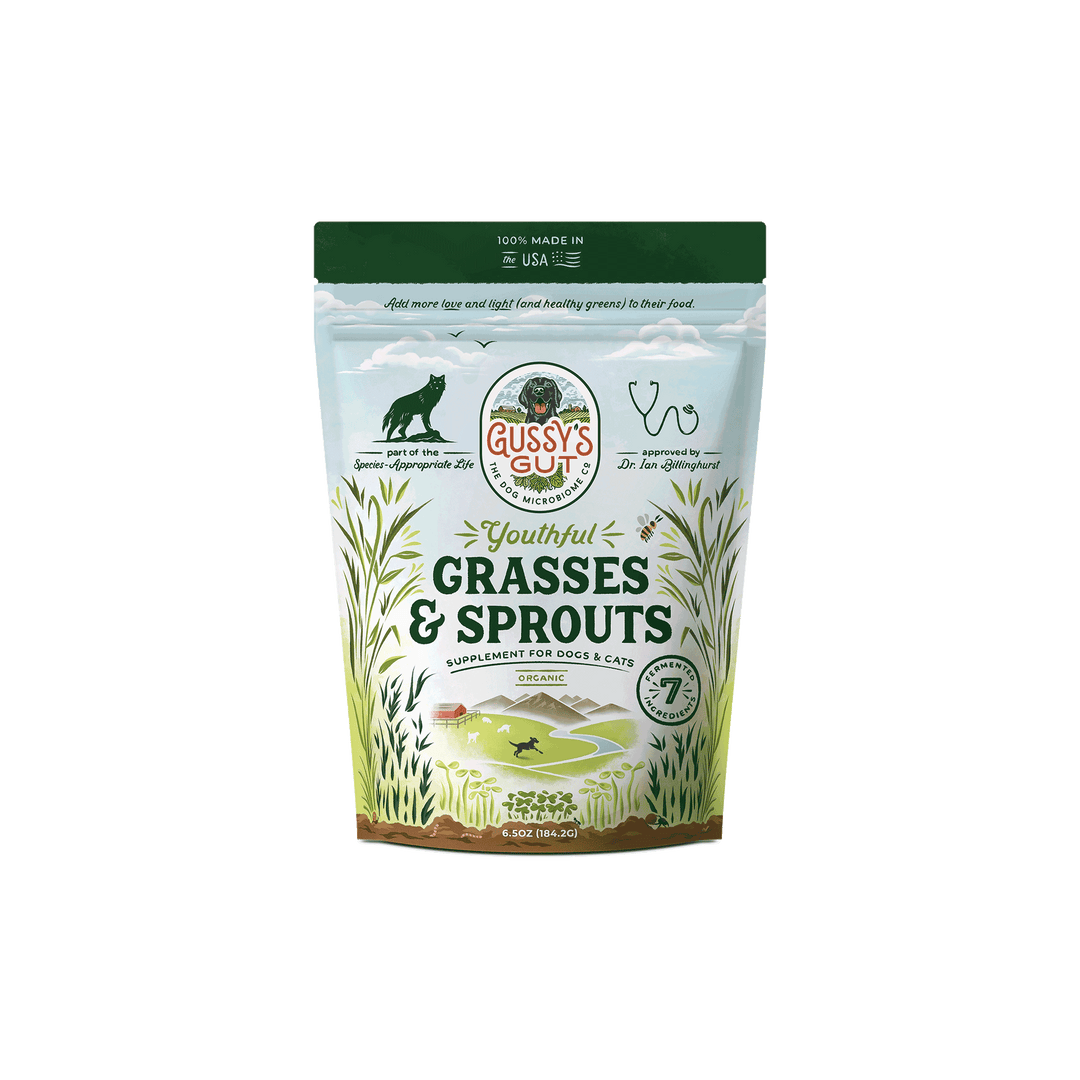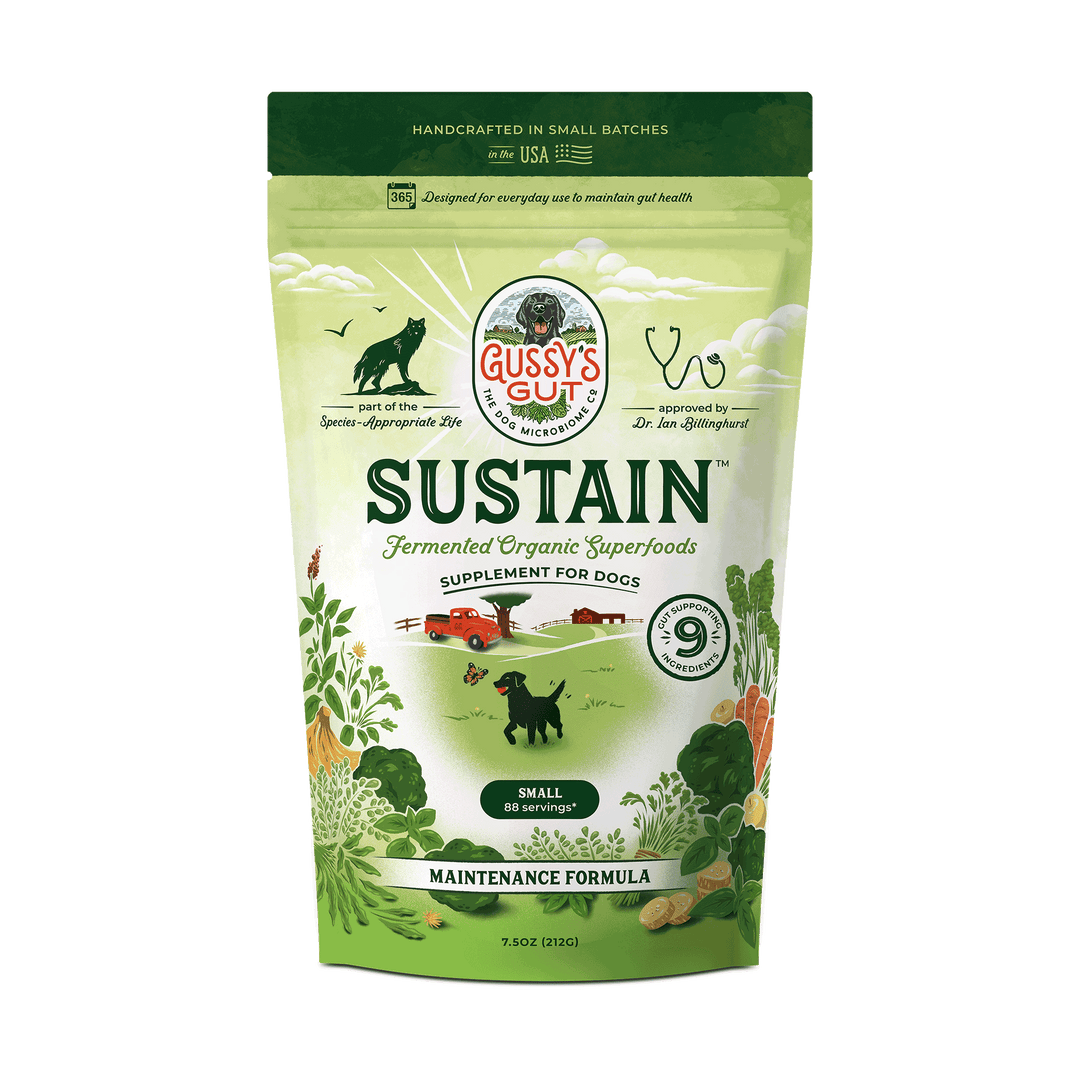I’ve been asked to talk about probiotics. And I’ve honestly procrastinated on talking about it. Because there’s much information that we have learned as a scientific society. And an awful lot of information is still to be determined. It’s like talking about drinking water.
We now know that many municipal water supplies are “contaminated “with chemicals we don’t want to ingest. But what is the right kind of water to drink? Or what is the correct type of water to give our pets? But that’s a different blog post about which I’ve procrastinated.
Why Understanding Probiotics Feels Like Solving a Puzzle
Let’s define probiotics to ensure we’re all on the same page. Probiotics are the “good guys"; the bacteria that help feed the gut allows the heart to do its job. These bacteria digest the food and produce byproducts that the body can absorb, and the probiotics, if plentiful, can outcompete any bad guys. And get rid of the harmful bacteria if a couple of them enter.
Is Every Probiotic the Same?
Examples? There are hundreds of species and sub-species of probiotics! There is the lacto group that usually grows in milk. There is the bífido group. There is the Stepto group. And a whole bunch of other ones!
I would list them for you, but their names will change tomorrow! These things are being redefined and reclassified all the time. Seriously.
Do Regulations Support or Hinder Probiotic Use in Pet Food?
The number of species legally allowed in pet food differs significantly from what is used in supplements.
The Association of American Feed Control Officials (AAFCO) and FDA, being governmental agencies, err on the side of safety. This means things take a long time because there’s a vast deliberation process.
So, what does this mean to us as pet owners? It means the number of species that are legally allowed to be listed on a fermentation-based food product is concise.
So, if we, as pet owners, are looking for a specific probiotic species, it very often won’t be listed on the pet food label. That doesn’t mean it is or is not in the food. Those species or sub-species have not been approved for food safety, labeling, or inclusion.
What's the Mystery of the Wild Ferment?

Think of it this way. Go to the local dairy farm and buy a gallon of raw milk straight from the cow. Bring that milk home and turn it into yogurt. You can use a starter culture from another brand of yogurt. You can ferment it naturally, based on some naturally occurring organisms in the milk and air.
In three months, do this again. Then, compare these two yogurts. The species of probiotics will be different! The number of organisms, even the total species represented, might differ even though you used the same starting culture. Well, how can that be?
This is called “wild ferment, “where things naturally change with time. You could be misleading yourself if you think sourdough bread in January is the same as sourdough bread in June.
This may seem a diversion from the topic, but it’s on point. Your two different batches of yogurt are going to have other organisms. It’s still yogurt. It’s still loaded with probiotics. It’s still incredibly healthy! But every organism represented in those two yogurts is not the same. Nor do these organisms occur in exact quantities because the environment has changed.
Regulations do not allow for these natural changes. Rules are based on 100% artificial, human-intervened, repeatable, non-adapting foods.
How Can Probiotics Transform Your Pet's Health?
As pet owners, we look for probiotics. We were probably trying to help our pets’ guts.
Maybe there’s diarrhea. Perhaps the immune system is out of balance.
Maybe there is itching—or yeasty skin.
All of these go back to the intestines; 80% of the immune system resides there. So, we’re looking for a healthy intestinal tract for our pets.
Ourselves, too, but I don’t talk about humans.
Which Probiotic is the Best? And Based on Whose Research?
So, if we’re trying to help our pets have better intestinal health and a more robust immune system, it’s widespread that we go looking for probiotics. Well, then the question is, "what’s the best probiotic?"
Well, often the answer is, What research did you read? Which sounds very snarky. And I admit I can be pretty sarcastic, but that’s not my purpose at this particular moment.
I’m trying to tell you that we have only begun to scratch the surface of probiotics and healthy intestines. There is much fantastic research. And there’s a whole lot of research that hasn’t been published.
Again, I’m not trying to be snarky, but the research that is conducted can potentially gain someone a profit. Otherwise, no one would ask the question. They wouldn’t spend the money if they were not hoping to recoup some cash. So, the questions that have been asked are minimal.
An example would be, “Can lactobacillus species improve intestinal health? “It’s a great question. The research is there. Yes, lactobacilli can help the intestines.
Why are Prebiotics Equally Important?
Some yogurt would’ve fixed everybody’s leaky gut issues if it were, but there’s more to it than that.
Recently, some companies have been in the business of helping pet owners improve their pets’ intestinal issues. These companies take a poop sample from the affected dog or cat. They compare the affected pet’s bacteria to those obtained from a population of so-called healthy dogs or cats.
The research conducted by the company defines these healthy dogs and cats. This research is often performed on fecal samples of dogs and cats who have only eaten raw or real food.
When this research was first started, these animals weren’t vaccinated. So, hopefully, their intestines were good. But we can’t guarantee that!
Can Our Pet's Past Affect Their Present Health?
I could be standing here looking at a dog who is third generation raw fed and hasn’t had vaccines, and neither did his parents, but if his grandparents were vaccinated and received antibiotics and steroids, those medications change the genetics—that epigenetic change can be passed through the DNA to subsequent generations of dogs!
So, in English, what I’m trying to say is that just because you have a dog or cat who hasn’t received any Western medicine interventions, it doesn’t mean that that animal is the perfect example of genetic health because its genetics could’ve been altered multiple generations ago and still be abnormal genetically.
If your eyes haven’t crossed yet, they probably have by now!
Are All Probiotic Products Created Equal?
So, if your dog or cat has diarrhea, give them probiotics. Which one? Pick a probiotic with lots of species of probiotics in it. Not just one. Do I expect that probiotic to make miracle changes? I do not. Not in this day and age. Because the whole environment of the gut, the biome is the latest and greatest word, has a myriad of inputs that go into it. And, like I said already, science is only as good as the question we have asked.
So, how do we heal the gut? Probiotics are a start. Not giving antibiotics is the next step. And for some animals, that’s enough. And some animals need a few more years. Some animals need help healing their intestines. Some animals need probiotics and biome support because their immune systems are compromised.
OK, I have a pet peeve I need to share. I am going back to that research. Research questions are usually very focused, particular, and directed. So, some research shows that adding fiber to a dog or cat’s diet strengthens one or two probiotic species that should be present in “standard“ and “healthy“ dog and cat intestines.
But let’s use our God-given brains before feeding Metamucil, Benafiber, or a grain-based kibble to our fresh food-fed pet. One, there are other ways to get fiber than to provide inferior ingredients. Two, do we want to go backward? So, I always have people take this information about the biome with a grain of salt. Does it make sense? I ask.
Probiotics Eat Too, But What?
Want to add fiber healthfully? Some excellent supplement companies use sprouted grains and fermented seeds to get these prebiotics into a pet diet. Wait a minute! Prebiotics? That’s not the same word as probiotic. The prebiotic is the food that the probiotic eats.
Does this sound complicated? Absolutely!
Feeding our pets good food is the first thing we must do to help them feel better. 80% of the time, it takes care of 80% of the problem. But that still leaves us with the tip of the iceberg—that part sticking out and staring us in the face.
Why Do Some Probiotic Products Have Fillers?
One more pet peeve: I often have people avoid products specific to dogs and cats. Very often, these products need to be of better quality. That doesn’t mean they all are! So, how do I help people identify the difference? Look at the fillers. If there are a whole bunch of flavor enhancements and stuffing, it’s not a quality product—for example, rice flour, tapioca starch, natural bacon flavor, natural smoked flavor, etc. Maltodextrin and magnesium stearate—I am very cautious about them. It depends on where they are on the ingredient list. All of these fillers are meant to make it look good, be easy for the pet owner to give, and essentially make it taste like candy so the pet is willing to eat it. But does it make sense to make probiotics into candy? (I suggest it does not.)
About the Author
Meet Dr. Cathy Alinovi, a Highly Esteemed Veterinarian, Respected Advocate for Natural Pet Wellness, and Visionary in Animal Health. With over two decades of experience, Dr. Cathy has earned recognition for her commitment to holistic and alternative approaches in veterinary medicine. Her journey from specializing in food animal medicine to pioneering alternative healthcare methods for pets showcases her unwavering dedication to improving the lives of animals. As an author, educator, and outspoken advocate, she has become a trusted voice, inspiring pet owners and professionals alike to prioritize the well-being of our furry companions. Join Dr. Cathy Alinovi on a journey towards better health and vitality for your beloved pets.





